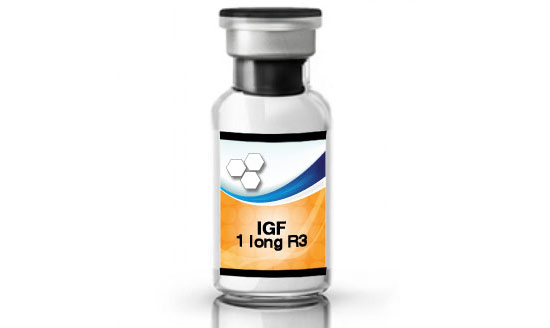Insulin-like Growth Factor 1
 July 29, 2013
July 29, 2013  IGF-1 Long R3 Information
IGF-1 Long R3 Information
IGF-1
The insulin-like growth factor 1, or more commonly referred to as IGF-1, is a protein encoded by the IGF-1 gene. In the 1970’s and 80’s many scientists became interested in this compound as a way to offer healthy ways of living. The researchers were amazed to find a number of benefits of IGF1 that can’t be found anywhere else. Therefore, scientists have continued their quest for learning more about the IGF-1 compound. In doing so, they have been able to develop even more efficient peptides, which are used for a number of different reasons. The popularity and possibilities have caused scientists to continue their research for the time being.
Research on IGF-1
Research on IGF 1 has shown a number of different things. First of all, the natural IGF is usually produced by the liver as an endocrine hormone. The production is stimulated by the growth hormone, but this can be halted by poor nutrition, insensitivity, and a failure of the body’s receptors. All of these factors are genetic defects that can seriously stymie the growth of individuals that have these traits. Scientists believe that the IGF could help many of these individuals who are lacking in this department.
Scientists have discovered that the IGF-1 has stimulating effects on many different parts of the body. This includes the muscles, bones, skin, cartilage located around the body, and the liver and kidneys. The number of positive effects that could be offered by the peptide has whipped the scientific community into a frenzy.
Uses of the IGF 1
The peptide is known to be therapeutic in a number of ways, but scientists are still researching how to perfect the peptide for human consumption. There are a plethora of possible benefits, but many scientists are yet unable to pinpoint the most efficient uses. As always, research will continue in-depth because the compound will almost never be “complete”.
Scientists and researchers are encouraged and incentivized to continue studying the peptide because of the potential effects that it can have on humans. Many sick people or undernourished will be able to get the proper support with some of the IGF peptide compounds.
Investment into the compound has been enormous in the past few decades because of all the benefits explained above. This means that the public will continue to see new IGF-1 products on the market with increased benefits.
IGF-1 in the Future
The future of the IGF-1 peptide is unknown, but promising. If researchers continue to make new breakthroughs, then the companies that fund the experiments will continue to do so. The compound is highly useful in a number of different ways, which is a huge benefit for their continued funding.
Like any other scientific research, the success of the peptide will be closely aligned with the funding that is gained. For humanity’s benefit, it is a good idea to maintain the level of research that has existed thus far and to continue building upon what has already been learned within the community.




